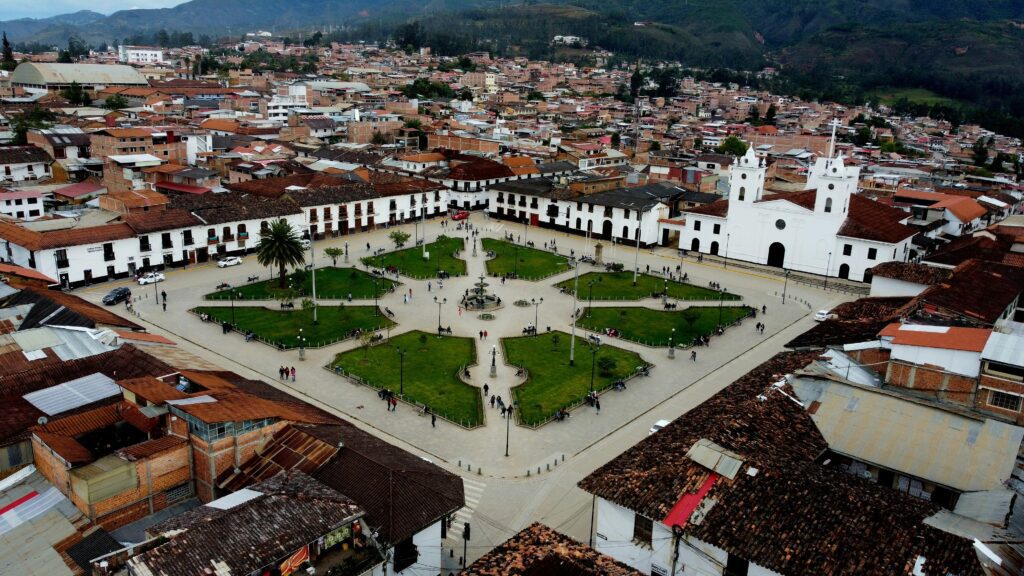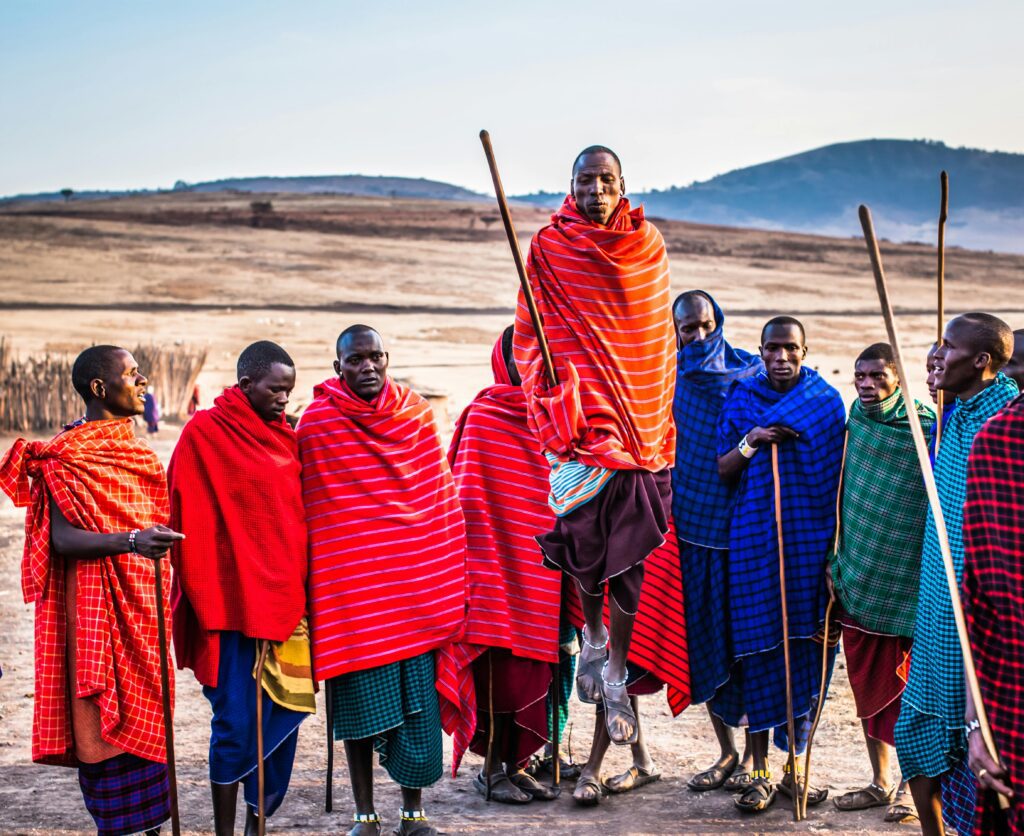“Discover Chachapoyas (Chachapoyas Travel Guide), Peru’s hidden gem! Explore ancient ruins, lush landscapes, and unique cultures off the beaten path.”
Introduction: Why Visit Chachapoyas?
Nestled in the misty highlands of northern Peru, Chachapoyas is a hidden gem that blends ancient history, breathtaking landscapes, and vibrant culture. Often overshadowed by Machu Picchu, this region is home to the Kuelap Fortress—a monumental stone citadel perched atop a mountain, earning it the nickname “Machu Picchu of the North.”

At an elevation of 2,335 meters (7,660 feet), Chachapoyas enjoys a pleasant climate year-round. The area was once inhabited by the Chachapoya civilization, known as the “Cloud Warriors,” whose legacy lives on in archaeological sites, towering waterfalls, and local traditions.
Why visit Chachapoyas?
✔ Less crowded than Cusco or Lima, offering a more intimate travel experience.
✔ Rich archaeological sites (Kuelap, Karajía, Revash) that rival Peru’s most famous ruins.
✔ Stunning natural wonders (Gocta Falls, Yumbilla Falls) hidden in lush cloud forests.
✔ Authentic cultural experiences (local markets, homestays, traditional festivals).
Personal Anecdote: The first time I arrived in Chachapoyas, the morning mist clung to the mountains like a veil, revealing glimpses of terracotta rooftops and cobblestone streets. The air smelled of eucalyptus and woodsmoke, a scent that still reminds me of this magical place.
Map of Chachapoyas
Best Time to Visit Chachapoyas
Dry Season (May – October)
- Ideal for hiking & sightseeing – Clear skies, minimal rain, and comfortable temperatures (15-25°C / 59-77°F).
- Best for photography – Golden-hour lighting over ruins and waterfalls creates dramatic shots.
- Peak tourist season – Book accommodations and tours at least a month in advance.
Wet Season (November – April)
- Lush green landscapes – The region transforms into an emerald paradise, perfect for nature lovers.
- Fewer crowds – Enjoy archaeological sites like Kuelap without the tourist rush.
- Road conditions – Some trails may be muddy, and waterfalls are at their most powerful.
Pro Tip: June is great for the Inti Raymi (Sun Festival) celebrations, where locals honor Inca traditions with music, dance, and colorful processions. September offers wildflower blooms, painting the hillsides in vibrant hues.
Sensory Detail: During the wet season, the sound of Gocta Falls roaring in the distance is thunderous, and the mist from the waterfall cools your skin even from afar.
Top Attractions in Chachapoyas
1. Kuelap Fortress
- Why visit? A pre-Inca citadel with massive stone walls (some reaching 20 meters high) and over 400 circular houses. The panoramic views of the Utcubamba Valley are unparalleled.
- How to get there? Take a cable car (20 min, ~$15 round-trip) or hike (3-4 hours) through cloud forest.
- Cost: ~$20 (includes guide & transport).
- Hidden Gem: Look for the Tintero, a mysterious inverted cone structure believed to be a ceremonial site.
2. Gocta Waterfall (771m tall, 3rd highest in the world)
- Hike details: 5 km (2.5 hours) through cloud forest, home to toucans and orchids. The final viewpoint rewards you with a jaw-dropping sight of the two-tiered cascade.
- Best time to visit: Early morning for misty, magical views. Pack a raincoat—the spray is intense!
- Local Legend: Locals once feared the waterfall, believing it was guarded by a mermaid spirit.
3. Karajía Sarcophagi
- Ancient cliffside tombs of the Chachapoya people, featuring eerie anthropomorphic coffins perched on a sheer rock face.
- Accessible via a short hike (~1 hour) through rolling hills. Guides share stories of the warriors buried here.
- Photography Tip: Visit at midday when sunlight illuminates the sarcophagi.
4. Revash Mausoleums

- Colorful burial chambers built into cliffs, adorned with red-and-white geometric designs.
- Great for history buffs & photographers. The hike (1.5 hours) offers stunning valley views.
5. Yumbilla Falls (5th tallest waterfall in the world)
- Less touristy than Gocta – Ideal for off-the-beaten-path adventurers. The 4-hour hike passes through caves and bamboo forests.
- Unique Feature: Yumbilla has four distinct drops, creating a mesmerizing cascade.
3-Day Chachapoyas Itinerary
Day 1: Kuelap & Local Culture
- Morning: Guided tour of Kuelap Fortress. Arrive early to beat the crowds and savor the quiet majesty of the ruins.
- Afternoon: Explore Chachapoyas town. Visit the Plaza de Armas, where colonial architecture meets vibrant street life, and the Museo Étnico to learn about Cloud Warrior history.
- Evening: Dinner at Café Fusiones (try trucha frita – fried trout with garlic sauce). Pair it with a chicha de jora (fermented corn drink).
Day 2: Gocta Waterfall Adventure
- Morning: Hike to Gocta Falls. Stop at the midway viewpoint for a snack of humitas (sweet corn cakes).
- Afternoon: Relax at Gocta Natura Cabins, an eco-lodge with hot tubs overlooking the jungle. Book a massage to soothe sore muscles.
- Evening: Stargazing in the cloud forest. The lack of light pollution makes for incredible Milky Way views.
Day 3: Karajía & Revash
- Morning: Visit Karajía Sarcophagi. Listen to your guide’s tales of ancient rituals.
- Afternoon: Explore Revash Mausoleums. Pack a picnic lunch to enjoy on the trail.
- Evening: Farewell dinner at La Tushpa (order the seco de cabrito—slow-cooked goat in cilantro sauce).
Need a customizable itinerary? Bookmark our Guide
Authentic Local Experiences (Chachapoyas Travel Guide)
1. Chachapoyas Market
- Try: Juanes (rice tamales wrapped in bijao leaves), humitas (sweet corn cakes), and cuy chactado (crispy fried guinea pig).
- Buy: Handwoven textiles dyed with natural pigments and artesanía (pottery) inspired by Chachapoya designs.
2. Homestays in Rural Villages
- Where? Cuispes, Huancas, or Leymebamba. Families welcome guests for farming, cooking classes, and traditional music nights.
- Cultural Insight: It’s customary to bring a small gift (fruit or school supplies) for your host family.
3. Coffee & Cacao Tours
- Best farm: Cafetal El Porvenir (organic coffee tasting). Learn how high-altitude beans create a smooth, chocolatey flavor.
- Chocolate Lovers: Visit ChocoMuseo in town for handmade truffles.
Personal Anecdote: I’ll never forget sipping fresh coffee with Don Manuel, a local farmer, as he explained how Chachapoyas’ unique microclimate produces some of Peru’s best beans. The warmth of his hospitality matched the rich aroma of the brew.
Where to Stay in Chachapoyas
| Type | Recommendation | Price Range | Why Stay Here? |
|---|---|---|---|
| Budget | Chachapoyas Backpackers | $10-$20/night | Social atmosphere, free breakfast |
| Mid-Range | La Xalca Hotel | $30-$50/night | Colonial charm, rooftop terrace |
| Luxury | Gocta Andes Lodge | $100+/night | Private cabins, waterfall views |
Pro Tip: For a unique stay, book a night at Casa Hacienda Achamaqui, a restored 18th-century hacienda.
Local Food & Dining Guide
Must-Try Dishes

- Seco de Cabrito (goat stew in beer and cilantro sauce, served with rice and beans).
- Trucha Frita (fried trout from local rivers, often paired with yuca fries).
- Cuy Chactado (fried guinea pig—crispy skin, tender meat).
Best Restaurants
✔ La Tushpa – Order the seco de cabrito and tamales verdes.
✔ Café Fusiones – Try their trucha frita and locally roasted coffee.
✔ Picantería Los Gustitos del Tío Paulo – A local favorite for humitas and chicha morada.
Dining Etiquette: It’s polite to say “Buen provecho” (enjoy your meal) to fellow diners.
Travel Tips & Hacks
Transportation
- From Lima: Fly to Jaén (~1.5 hours, $80-$120) or Tarapoto, then take a bus (~4 hours, $10).
- Local transport: Shared taxis (colectivos) cost ~$5 per ride. Negotiate fares in advance.
Packing List
✔ Hiking boots – Trails can be slippery, especially in the wet season.
✔ Rain jacket – Weather changes rapidly in the cloud forest.
✔ Reusable water bottle – Stay hydrated at high altitude.
Safety Tips
- Avoid night travel on rural roads; landslides are common in the wet season.
- Carry cash – ATMs are limited, and small vendors don’t accept cards.
FAQs About Chachapoyas
1. Is Chachapoyas safe for solo travelers?
Yes! It’s one of Peru’s safest regions. Stick to well-trodden paths, use registered guides, and avoid walking alone at night in remote areas.
2. How many days do I need in Chachapoyas?
At least 3 days to see the main attractions. Add 2 more if you want to explore Leymebamba or the Quiocta Caverns.
3. Can I visit Chachapoyas without a tour guide?
Yes, but guides are recommended for Kuelap & Gocta to fully appreciate the history and trails.
4. What’s the best way to get around?
Shared taxis (colectivos) or organized tours. Rent a car only if you’re comfortable with mountain roads.
5. Is Chachapoyas expensive?
No! Budget travelers can get by on $30-$50/day, including meals, transport, and lodging.
6. Are there any cultural customs I should know?
- Always greet locals with a “Buenos días/tardes.”
- Ask permission before photographing people.
- Tipping 10% in restaurants is appreciated.
Final Thoughts: Why You Should Visit Now
Chachapoyas remains one of Peru’s best-kept secrets—untouched by mass tourism, rich in history, and bursting with natural beauty. Whether you’re an adventurer, history buff, or foodie, this region has something unforgettable to offer.
Start planning your Chachapoyas (Peru) adventure today—before the crowds discover it!
Keywords Used:
– Primary: “Best Chachapoyas (Peru) travel guide”
– Secondary: “3-day Chachapoyas (Peru) itinerary,” “Chachapoyas (Peru) backpacking tips”
– Location-specific: “Kuelap Fortress,” “Gocta Waterfall,” “Chachapoyas tourism”



